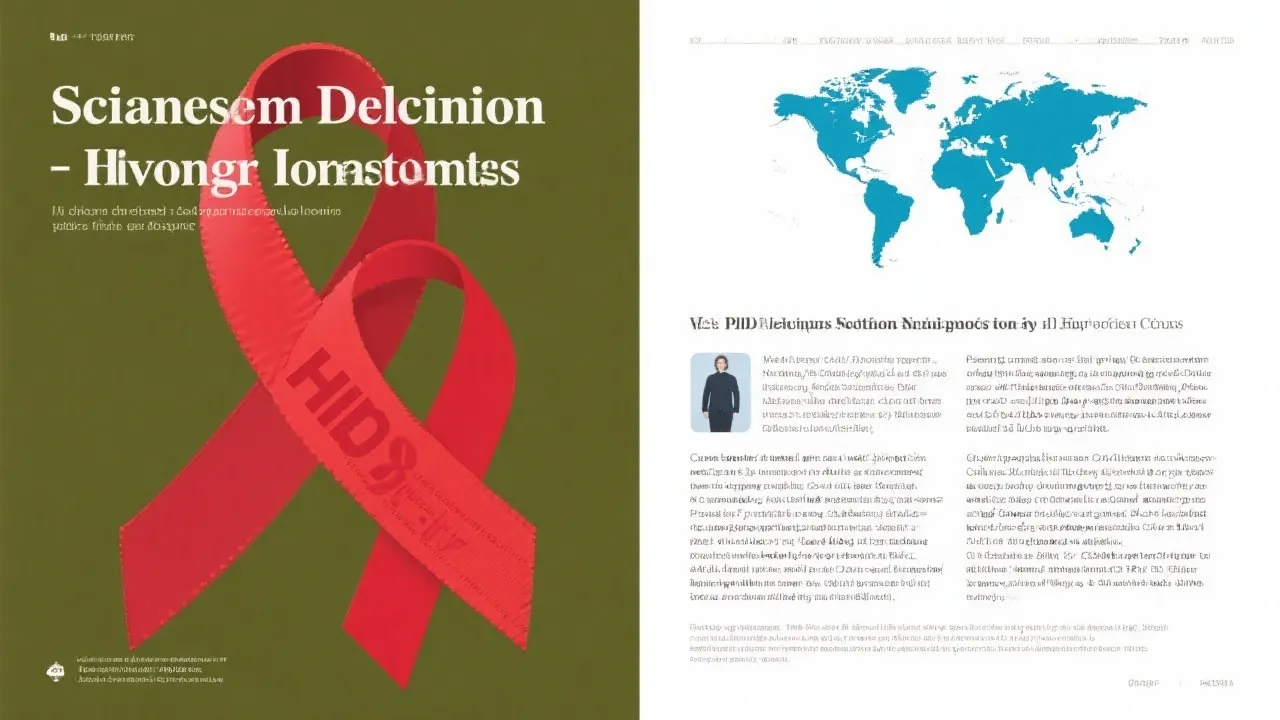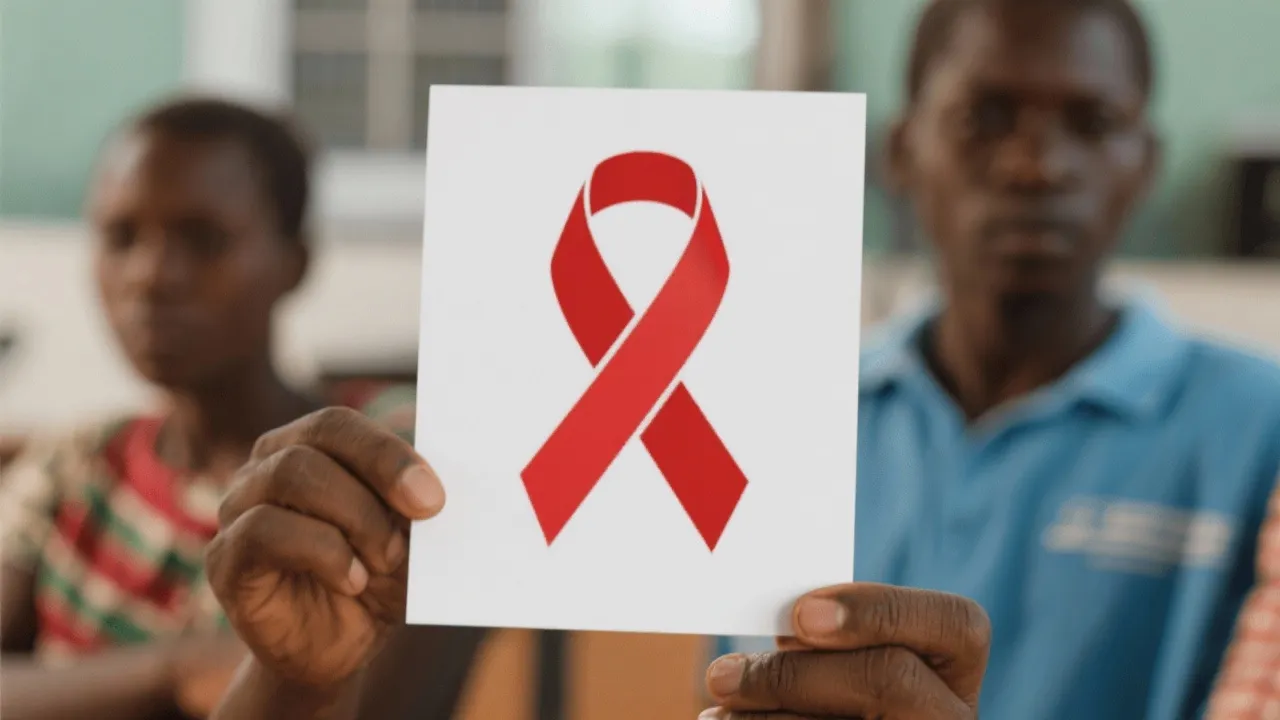Understanding the Decline of HIV
The decline in HIV infections is an encouraging sign of progress in global health efforts. With the advent of advanced medical treatments, preventive measures, and widespread education, the incidence of HIV is steadily decreasing. Analysis reveals the multifaceted strategies behind this trend, emphasizing the significance of continuous investment in healthcare and international collaboration.

Overview of HIV Decline
The decrease in HIV infections represents a monumental achievement in public health. This decline is attributed to a mix of effective government policies, community programs, and medical advancements. Over the past few decades, the global landscape regarding HIV has shifted remarkably, with the World Health Organization (WHO) declaring a notable reduction in new infections and AIDS-related deaths. By analyzing various factors and strategies at play, this article explores the integral elements contributing to the downward trend in HIV cases globally.
Effective Prevention and Education
One of the primary reasons for the decline in HIV infections is the enhancement of preventive measures. Education campaigns have significantly increased awareness about HIV transmission and prevention. Educational programs have empowered individuals to take proactive steps in protecting themselves, such as using condoms, engaging in safe sex practices, and undergoing regular testing. Moreover, these initiatives have ramped up efforts to reduce the stigma associated with HIV, encouraging more people to seek testing and treatment.
Community outreach is vital in these educational campaigns. For example, peer educators within local communities can effectively reach underserved populations, tailoring messages that resonate culturally and socially. By employing culturally sensitive approaches, these programs can foster deeper connections and understanding among individuals, thus enhancing the overall impact on communities.
The role of social media and technology also cannot be understated in the realm of HIV education. Digital platforms have proven to be powerful tools for reaching wider audiences, especially younger demographics. Campaigns leveraging social media have led to increased engagement, making information about HIV more readily available and encouraging conversations around prevention and treatment.
Advancements in Medical Treatments
Medical advancements have played a pivotal role in the decline of HIV. The development of antiretroviral therapy (ART) has revolutionized the management of HIV, converting it from a fatal disease into a manageable chronic condition. ART not only prolongs the life of those living with HIV but also reduces the viral load to undetectable levels, significantly decreasing the likelihood of transmission. The U=U campaign, which stands for Undetectable = Untransmittable, illustrates this critical concept. When an individual's viral load is maintained at undetectable levels through effective ART, the risk of transmitting the virus to sexual partners is virtually nonexistent.
Furthermore, the evolution of HIV medications has led to improved adherence and fewer side effects, making treatment regimens more accessible and manageable. Long-acting injectable ART options have emerged as alternatives to daily pills, providing individuals more flexibility and enhancing adherence to treatment. This innovation has brought renewed hope and motivation for many living with HIV, enabling them to lead healthier, more fulfilling lives.
As research continues, the development of potentially revolutionary treatments, such as broadly neutralizing antibodies and long-acting therapies, showcases the commitment within the medical community to eradicate HIV. These advancements are not only significant for individuals already infected but also play a crucial role in prevention, ultimately aiming to reduce new infections and usher in an era focused on ending the epidemic.
Global Collaborative Efforts
International collaborations and funding have been instrumental in combating HIV. Organizations such as the World Health Organization (WHO), UNAIDS, and the Global Fund to Fight AIDS, Tuberculosis, and Malaria have pooled resources to implement effective strategies worldwide. These efforts have resulted in expanded access to treatment and prevention services, particularly in regions heavily burdened by the disease.
Moreover, partnerships involving governments, NGOs, and private sectors create a comprehensive response to the epidemic. For instance, the PEPFAR (President’s Emergency Plan for AIDS Relief) initiative has been vital in providing lifesaving ART and diagnostics to millions in Africa and other parts of the world. Such collaborative efforts underscore the necessity of working together across borders to mount an effective response that leaves no one behind.
Funding allocations from international organizations have also paved the way for innovative pilot programs, such as pre-exposure prophylaxis (PrEP) initiatives. These programs are designed to empower high-risk populations with tools to prevent HIV infection actively. By providing access to PrEP and increasing awareness surrounding its use, these collaborative efforts are foundational in driving down rates of new infections.
Local Implementation of Global Strategies
While global efforts are pivotal, local implementation ensures the success of these strategies. Countries that formulate and execute localized plans can more effectively address specific challenges and cultural nuances. Tailoring interventions to the local demographic has resulted in the more efficient use of resources and increased uptake of preventive and treatment measures. This customization is crucial given the diverse social, economic, and cultural contexts in which HIV proliferates.
For example, some regions may face specific barriers, such as entrenched stigma surrounding sex work or drug use. Localized strategies may include engaging community leaders and advocates who can act as trusted voices within their communities. Listening to local perspectives and involving community members in the planning and implementation process leads to strategies that are not only more effective but also more accepted by those they aim to serve.
Moreover, the establishment of targeted health services, such as youth-friendly clinics and condom distribution programs, reflects a focused response to specific population needs. Research has shown that these targeted programs significantly increase both testing rates and treatment uptake when implemented correctly, thereby contributing to the broader goal of reducing HIV infections.
| Strategy | Impact on HIV Decline |
|---|---|
| Education and Awareness Campaigns | Significant reduction in stigma and increased awareness about prevention leading to reduced transmission rates. |
| Antiretroviral Therapy (ART) | Dramatically improved life expectancy for those with HIV and reduced transmission. |
| International Funding and Support | Enhanced resource availability for treatment and prevention in heavily impacted regions. |
| Localized Programs | Increased testing and treatment uptake through tailored community engagement. |
| PrEP Initiatives | Empowerment of high-risk populations with preventative tools, thereby reducing new infections. |
Current Challenges and Future Directions
Despite the decline, challenges remain in the fight against HIV and AIDS. The emergence of drug-resistant strains of HIV is a pressing issue that has raised alarms in public health sectors globally. Drug resistance complicates treatment protocols and may lead to increased transmission and higher viral loads in affected individuals. Addressing this challenge requires ongoing research to develop new, effective therapies and the establishment of monitoring systems to detect changes in resistance patterns.
Accessibility disparities also present ongoing hurdles. Although many regions have seen advancements and increased access to treatment, significant gaps still exist. Marginalized populations often face financial, geographical, and sociocultural barriers that restrict their access to necessary services. Ensuring equitable distribution of resources, alongside building robust healthcare infrastructures, remains imperative for sustained progress.
The need for sustained funding is another critical issue. Public and private funding sources can fluctuate, impacting the health systems reliant upon them for delivering essential HIV services. Advocacy for holistic funding models that account for both treatment and prevention services must be prioritized to secure the ongoing fight against this epidemic. Innovative financing models, such as social impact bonds, may present alternative avenues for generating funds dedicated to these efforts.
Future directions include further advancements in HIV vaccines and treatments. The pursuit of a comprehensive vaccine has been one of the most elusive goals in the fight against HIV. However, recent trials have shown promising results with new vaccine candidates, fueling optimism among researchers and public health advocates alike. The continuous investment into vaccine research, alongside public health campaigns promoting vaccination, could have transformative effects in the long-term strategy against HIV.
Additionally, embracing technology can facilitate the future of outreach, testing, and treatment. Digital health innovations, such as telemedicine consultations and mobile health apps, offer the potential to bridge gaps in healthcare accessibility, particularly in remote or underserved regions. These advancements can improve individuals' ability to receive timely information, testing, and ongoing support, thus enhancing overall health outcomes.
FAQs
Q: What are the key factors contributing to the decline of HIV infections?
A: Improved preventive measures, advancements in medical treatments like ART, effective international collaborations, and successful local implementations are crucial factors. Alongside these, targeted educational approaches and community engagement play significant roles in addressing the needs of diverse populations.
Q: How does ART contribute to the decline in HIV transmission?
A: ART effectively reduces the viral load in HIV-positive individuals to undetectable levels. This not only prolongs their lives but also significantly lowers the risk of transmission to sexual partners, as highlighted by the U=U campaign, promoting further public understanding and acceptance of the treatment.
Q: What challenges remain in the battle against HIV?
A: Ongoing challenges include drug resistance, funding sustainability, accessibility disparities, and social stigma. Furthermore, ensuring equitable access to treatment and prevention services is crucial for continuing progress in reducing new HIV infections globally.
Q: What innovative strategies are being implemented to enhance HIV prevention and treatment?
A: Strategies include the expansion of telehealth services, the use of digital health technologies, community-based health interventions, and participatory research approaches that engage affected communities in decision-making processes. Such innovations aim to reach underserved populations and enhance the efficacy of existing programs.
Q: How important are international collaborations in combating HIV globally?
A: International collaborations are vital as they pool resources, expertise, and funding necessary for a comprehensive response to HIV. Partnerships across geopolitical boundaries allow for shared knowledge, best practices, and coordinated efforts to address health disparities and deliver effective interventions.





